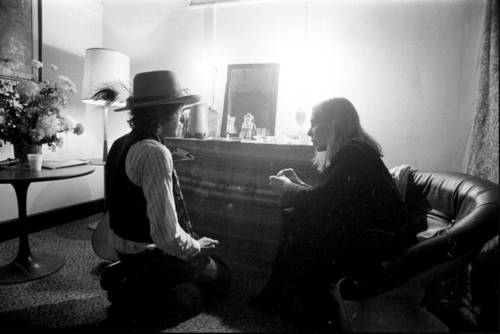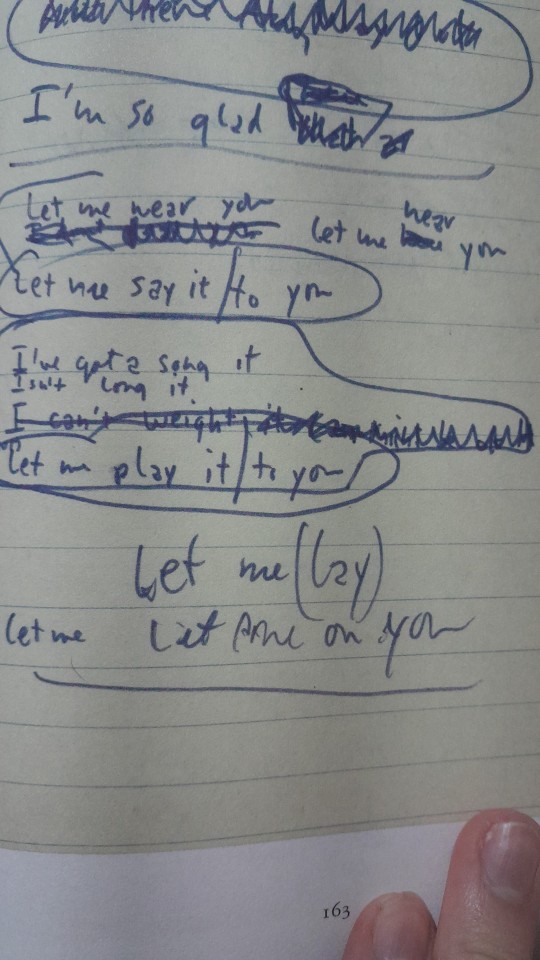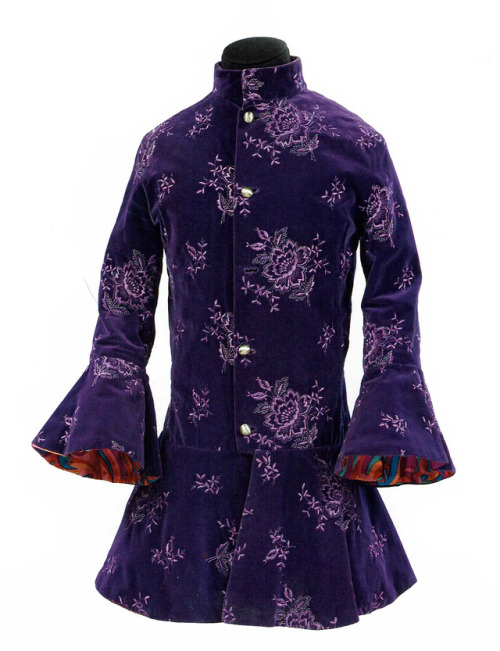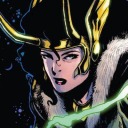From George’s Handwritten Lyrics To The Harrisong “All Things Must Pass.”

From George’s handwritten lyrics to the Harrisong “All Things Must Pass.”
Q: “You once remarked that you were trying to write a Robbie Robertson kind of song with ‘All Things Must Pass.’” George Harrison: “‘The Weight’ was the one I admired, it had a religious and a country feeling to it, and I wanted that. You absorb, then you interpret, and it comes out nothing like the thing you’re imagining, but it gives you a starting point.” - Musician, November 1987
Q: “Where did the phrase ‘All Things Must Pass’ come from?” George Harrison: “I think I got it from Richard Alpert/Baba Ram Dass, but I’m not sure. When you read of philosophy or spiritual things, it’s a pretty widely used phrase. I wrote it after [the Band’s 1968] ‘Music From Big Pink’ album; when I heard that song in my head I always heard Levon Helm singing it!” - Billboard, 8 January 2001
“‘All Things Must Pass’ just shows the nature of the physical world. Everything is changing all the time. We get born and we die. But we are in this body, and we go through from birth to death. We stay the same — the soul is the same, but the body is changing. It’s the nature of… it’s called duality, and it just keeps changing. But everything passes except the essence of that, which is our soul.” - George Harrison, French TV interview, 26 August 1997 (x)
More Posts from Thusspokejade and Others


George Harrison during Robert Whitaker's Yesterday and Today photo session | 25 March 1966 © Leslie Bryce


Intermission in the Harrison cars series: Kinfauns goes psychedelic. (You can find a photo of George Harrison in front of the mural in the book Living In The Material World.) Photo 1 by Robert Whitaker, photo 2 courtesy of messynessychic dot com.
“During autumn [of 1967] George asked Simon and me to paint a mural around the fireplace in the living room at the ‘Kinfauns’ bungalow in Esher. The mural portrayed George and Pattie as ‘Music Boy’ and ‘Flower Girl,’ as they lovingly called each other then, attended by a Yogi surrounded with an Aura of Light as the focal point to express their interest in Hinduism. We stayed at their lovely place about ten days to complete it. Inspired, George started decorating the exterior of the house, graffiti style with spray cans […]. George was kind and funny but would also be quiet and pensive at times. […] George also turned us on to Paramahansa Yogananda’s book; ‘Autobiography of a Yogi,’ whose large portrait was watching us from the wall while we were painting the mural […].” - Marijke Koger, marijkekogerart dot com, 11 August 2021
“At that moment, an arm wrapped around me from behind, and even though I couldn’t see who it was, I knew it could only be George. He put his head on my right shoulder and gave me a cheeky grin and a sidelong glance. ‘What’s that under your nose, George?’ ‘It’s called a mustache.’ George put on a jokingly posh look and slowly brushed along his mustache with one finger. […] He pointed at his new fireplace. ‘Looks like a lot of work, doesn’t it? Look, there’s Krishna in the center.’ It seemed very important to George to have more and more symbols of Indian culture around him. While he stood next to me, with his long, full dark hair, the mustache and dark eyes sparkling with enthusiasm, he suddenly seemed like an Indian himself. He fully merged into this culture and way of life. George had found his path. […] George grabbed a paintbrush as well, and together with the Dutch gypsies we set to work on George’s fireplace.” - Klaus Voormann, translated from Warum spielst du Imagine nicht auf dem weißen Klavier, John? (2003) (x)


Bob Dylan and Joni Mitchell, The Rolling Thunder Revue—Harvard Square Theater, Cambridge, MA, November 20, 1975 © Ken Regan.
Not used lyrics for i'd have you anytime are insane



"All that i can say is not enough/it comforts me to know we're so much in love" "(without a doubt)"
"Let me hear you" "let me say it to you"
"I've got a song" "it isn't long"(? I think?) "Let me play it to you"
And of course whatever the hell "and i'm so glad that you're my love" is supposed to mean

George Harrison’s purple jacket, worn when he and John were on the David Frost Programme September 27, 1967. Designer unknown.
My scan from “You Say You Want a Revolution? Records and Rebels 1966-70.” This was the catalogue from the Victoria & Albert Museum exhibition of the same name. Book edited by Victoria Broackes and Geoffrey Marsh.




George Harrison being interviewed while at the Brazilian F1 Grand Prix in February 1979






The First U.S. Visit (1964)



George Harrison






JOHN LENNON and GEORGE HARRISON during recording sessions for the "IMAGINE" album
-
 atomipane liked this · 1 year ago
atomipane liked this · 1 year ago -
 crookedparadiseobservation liked this · 1 year ago
crookedparadiseobservation liked this · 1 year ago -
 geriatricfool liked this · 1 year ago
geriatricfool liked this · 1 year ago -
 thusspokejade reblogged this · 1 year ago
thusspokejade reblogged this · 1 year ago -
 thusspokejade liked this · 1 year ago
thusspokejade liked this · 1 year ago -
 acheformine liked this · 1 year ago
acheformine liked this · 1 year ago -
 pineapplesandhorseradish reblogged this · 1 year ago
pineapplesandhorseradish reblogged this · 1 year ago -
 fortheturnstiles liked this · 1 year ago
fortheturnstiles liked this · 1 year ago -
 meimeimoimoiart liked this · 2 years ago
meimeimoimoiart liked this · 2 years ago -
 powderfinger-mp4 liked this · 2 years ago
powderfinger-mp4 liked this · 2 years ago -
 surrealchipmunkandmagpie liked this · 2 years ago
surrealchipmunkandmagpie liked this · 2 years ago -
 rufusrant liked this · 2 years ago
rufusrant liked this · 2 years ago -
 headgehug liked this · 2 years ago
headgehug liked this · 2 years ago -
 theoldrounder liked this · 2 years ago
theoldrounder liked this · 2 years ago -
 minimefromaustinpowers liked this · 2 years ago
minimefromaustinpowers liked this · 2 years ago -
 mrcrow liked this · 2 years ago
mrcrow liked this · 2 years ago -
 plentyofthatguitar liked this · 2 years ago
plentyofthatguitar liked this · 2 years ago -
 andromeda1023 liked this · 2 years ago
andromeda1023 liked this · 2 years ago -
 polarisintheskywithdiamonds liked this · 2 years ago
polarisintheskywithdiamonds liked this · 2 years ago -
 oldman55 liked this · 2 years ago
oldman55 liked this · 2 years ago -
 onenightblog liked this · 2 years ago
onenightblog liked this · 2 years ago -
 a-littlefawn liked this · 2 years ago
a-littlefawn liked this · 2 years ago -
 aug72 liked this · 2 years ago
aug72 liked this · 2 years ago -
 mrsjohnbonham liked this · 2 years ago
mrsjohnbonham liked this · 2 years ago -
 haritrash reblogged this · 2 years ago
haritrash reblogged this · 2 years ago -
 unheimlichkeit liked this · 2 years ago
unheimlichkeit liked this · 2 years ago -
 gentlygentlyweeps liked this · 2 years ago
gentlygentlyweeps liked this · 2 years ago -
 sgt-celestial liked this · 2 years ago
sgt-celestial liked this · 2 years ago -
 horriblehistorieschild liked this · 2 years ago
horriblehistorieschild liked this · 2 years ago -
 waldfeerosisblog liked this · 2 years ago
waldfeerosisblog liked this · 2 years ago -
 harrisons-hoe liked this · 2 years ago
harrisons-hoe liked this · 2 years ago -
 tommkinsky liked this · 2 years ago
tommkinsky liked this · 2 years ago -
 dracha liked this · 2 years ago
dracha liked this · 2 years ago -
 geriatricfool reblogged this · 2 years ago
geriatricfool reblogged this · 2 years ago -
 geriatricfool reblogged this · 2 years ago
geriatricfool reblogged this · 2 years ago -
 jojonutisland liked this · 2 years ago
jojonutisland liked this · 2 years ago -
 amarellys liked this · 2 years ago
amarellys liked this · 2 years ago -
 muldoon85 liked this · 2 years ago
muldoon85 liked this · 2 years ago -
 meadow-dusk liked this · 2 years ago
meadow-dusk liked this · 2 years ago -
 harrisonarchive reblogged this · 2 years ago
harrisonarchive reblogged this · 2 years ago
